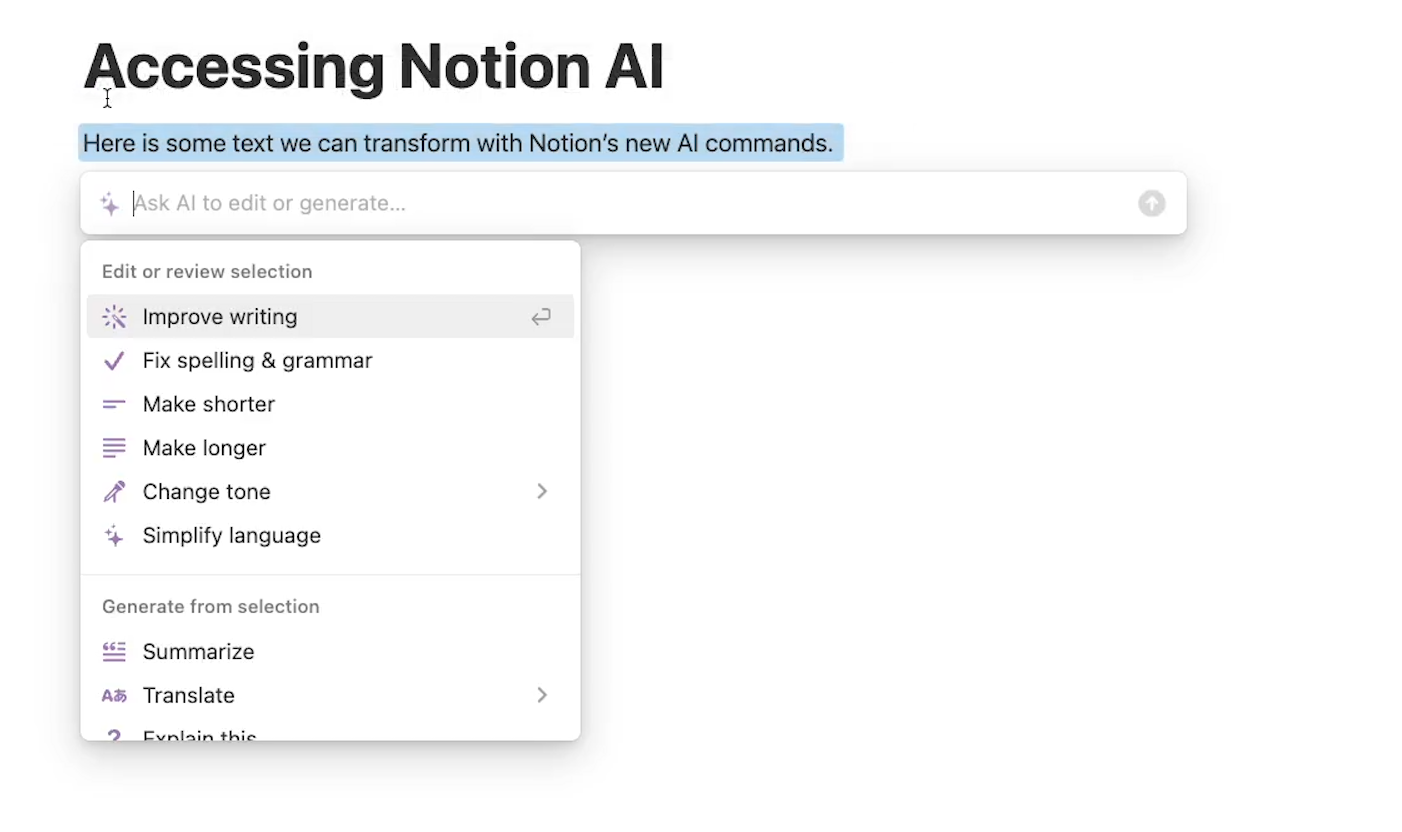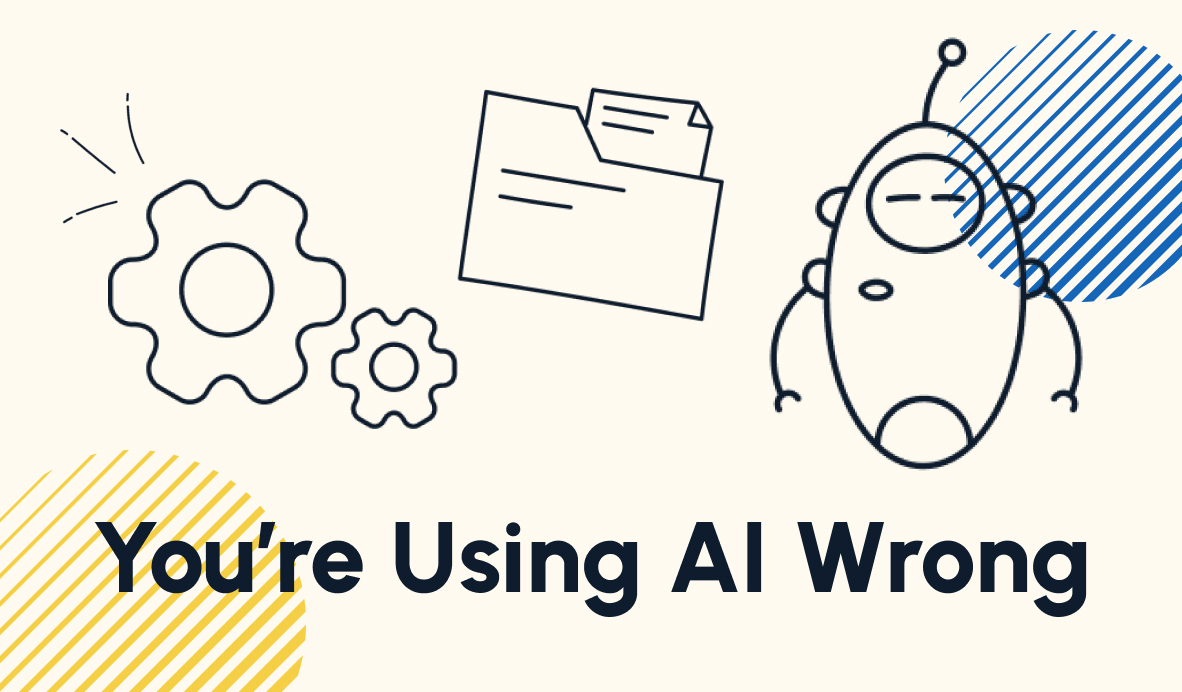5 Popular Apps Letting You Do More With AI
AI is quickly becoming a key part of popular applications that we use every day. In this post, we'll share 5 of the most exciting new AI features that are coming to major web apps.
March 22, 2023

In the last several months, AI has jumped to the forefront of mainstream software. With tools like OpenAI’s ChatGPT, we’ve all seen how AI can help us with our everyday writing, brainstorming, and planning.
So it’s no surprise that many other tech companies are racing to add AI into their feature sets. Search engines, automation providers, and database apps are just some of the apps that are starting to incorporate new AI components.
In this post, we’ll show you five of the most interesting apps that are adding AI functions into their software.
Edit and Generate Text with Notion AI
First, let’s take a look at Notion. Notion is an app for building a highly customizable workspace for docs, projects, and more. You can create anything from a simple text document to a robust database for tracking your team’s tasks.
Recently, Notion has added several “Notion AI” options right alongside their main content blocks. The app provides about 20 options for AI prompts that help you create content faster, improve your writing, translate text, brainstorm ideas, and more.

So if you’ve been struggling with writer’s block, or just want to tighten up your writing, you may want to check out Notion AI.

Notion AI previously required you to sign up for a waitlist, but now, every Notion account has access to AI features.
Each account gets 20 AI responses for free, but after that, you’ll need to pay an extra $10/mo to keep using Notion AI. If you’re curious about Notion AI but don’t want to use up all of your free responses at once, you can check out our video here for a deep dive into Notion AI’s features.
Build Full Interfaces with an AI Prompt in Coda
Next, let’s take a look at Coda.
Coda is a very similar app to Notion, as it also allows users to create versatile documents, tables, and charts to manage their workspace.
Currently, there are multiple AI integrations in Coda’s “pack” library that allow for a lot of similar functionality to what we just covered in Notion.
The OpenAI Pack by Spencer Chang will help you to draft emails or blog posts, brainstorm ideas, and pretty much everything else that Notion AI does.

You can already add the OpenAI pack to your Coda docs for free right now, but Coda is also working on their own native AI features which will unlock much more advanced possibilities.
Coda AI aims to provide more technical abilities, rather than simply focusing on writing and language processing tasks. It will be able to generate formulas, create tables, and search for relevant data.
It’s even going to be able to create entire interfaces based on a single prompt using the “Solution builder”.


For instance, in their preview video, Coda demonstrates how users can give a single short prompt to their AI and have it build a task manager like Asana that even includes time tracking.
Coda AI has the potential to do some amazing things, but for now, it’s still in Alpha. It likely won’t be ready for primetime until later this year, but you can join the Coda AI waitlist now to save your place in line.
AI in Automation Apps like Tonkean, Zapier, and Make
Moving to the world of no-code automation, enterprise-focused Zapier alternative Tonkean has added an interesting GPT-3 integration to their feature set.
Tonkean’s AI tools and automated workflows are focused primarily on enterprise use cases. They support workflows like procurement, handling legal requests, and responding to incoming invoices.
Tonkean uses AI to analyze incoming data, surfacing key takeaways, and generating documents to respond to requests automatically.
For instance, with their “LegalGPT” workflow, Tonkean’s AI sorts incoming legal requests, determines several key factors like the urgency and risk of each request, and alerts the team as needed.

The AI tools Tonkean has put together are interesting, and could be very helpful if you’re running a large business with hundreds of employees. However, for smaller companies or startups, tools like Zapier or Make are likely going to be more accessible automation platforms.
Building AI Workflows with Zapier and Make
Zapier and Make haven’t integrated any native AI features yet, but they can connect with AI software like OpenAI in the same way that they connect to any app.
For instance, in Zapier, you can simply select the Open AI integration to configure and send an automated prompt and process the answer.

If you’d like to see an example of how AI and Automation can work together, go to XRay.Systems to check out Debrief. This is a system we’ve built that lets users upload a recorded Zoom meeting and get an AI-generated summary, complete with any key action items they need to complete.

Debrief relies primarily on no-code tools to create AI prompts for each uploaded video.
Ultimately, one of the greatest benefits of no-code automation tools is that they can leverage virtually any app with an API. So even if they don’t develop native AI features, they can just integrate with an app that does.
AI-Assisted Search in Microsoft’s Bing
Bing has been playing second fiddle to Google ever since its inception, but its quick adoption of AI just might help it to gain some ground against its competitors. At least, with the $10 billion they’ve already invested into OpenAI, that’s certainly what Microsoft is hoping for.
At this point, you’ve probably already tried out OpenAI’s ChatGPT software, so to make it simple, you can think of Bing’s AI as essentially being a version of ChatGPT that’s actually connected to the internet.

As a result, Bing can give faster, and - hopefully - more accurate responses to user questions.
“Hallucinations” are still a huge problem in the world of AI, particularly with ChatGPT. It’s not uncommon for ChatGPT to give completely incorrect answers, and to insist on those incorrect answers when you try to correct it.
By connecting to the internet, Bing’s AI may be able to use up-to-the-minute information to provide more accurate answers, but that remains to be seen. You can join Bing’s waitlist to find out for yourself (note: it appears that the waitlist is now granting instant access to “the new Bing”).
Try Softr to Build Market-Ready Apps with AI Integrations
Finally, let’s take a look at Softr.
Softr is a platform that enables you to build market-ready web apps with a no-code interface.
In addition to several other content blocks for building your web app, Softr includes blocks that connect with DALL-E and OpenAI.

For example, If you’d like to include AI prompts as part of your product, you can create a text box connected to OpenAI so that users can enter prompts and receive answers through your Softr web app.

Softr’s OpenAi blocks are great for a first-time builder experimenting with an AI product.
Softr makes it very easy to create new data with integrations like OpenAI, and manage that data in a user-friendly app like Airtable.
Overall, it’s one of the cheapest and fastest ways to build an MVP and start testing your idea on the market.
Of course, Softr still has its limitations. Your web app must be connected to either Airtable or a Google sheet, so you don’t have many options for your backend. You also won’t have the same kind of granular control over your web apps’ design like you would in an app like Webflow or Wordpress.
But if your priority is getting your AI product to market as fast as possible, Softr is a great choice. If you want to learn more about building a web app with Softr and Airtable, check out our video about working with a no-code tech stack right here, or try out Softr for yourself at softr.io.
AI is Redefining the Way We Work
Through native features and third-party integrations, dozens of popular apps are already transforming the way people work with AI
This is only the beginning; there’s no doubt that we’ll be seeing AI features and tools added to countless web apps in the coming years. If you’d like to learn more about using AI and other tools to streamline your workflows, check out our blog or our YouTube channel. You can also follow XRay on Twitter, Facebook, or LinkedIn.







